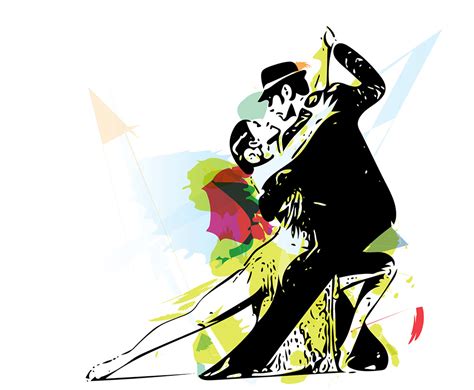Classes

You are on your way!
Group Classes and Workshops are offered on a regular basis!
Below is a description of classes that are offered and notes that will help you get the most out of each class.
Yes, you can learn to dance Tango. Tango is sensual, romantic, elegant- a dance of communication and connection.
You do not need a partner to learn Tango or to experience the magic of Tango. Argentine Tango is a social dance and most tango dancers are single men and women.
It takes two to Tango, both leader and follower have duties and responsibilities. We are independent, yet depend on one another for the magic that makes Argentine Tango what it is- an absolutely lovely experience of movement, music, communication and connection. You can dance smoothly, flowing, intensely, completely focused on your partner and the music.
Classes are offered in 6-week series. Please plan to start with the first or second class in the series, as each class builds on the previous class. Most people take the 6-week beginner series 2 or 3 times before moving on to the intermediate/advanced class.
The Tango Basics class (open to complete beginners) is taught from 6:30 to 7:30 pm, followed by a 30 minute practica (practice time).
The Continuing (intermediate) Tango class (by instructor permission) is taught from 8:00 to 9:00 pm. This class assumes you have a strong foundation of Tango and moves at a quicker pace. After you feel comfortable with the concepts taught in the beginner class, ask an instructor if you’re ready.
Check the calendar to find out when the next series starts.
Requirements for all Classes
Please be respectful of other dancers: dress appropriately, be conscious of breath and body odors, and please limit cologne or perfume for those that are sensitive. If you are a smoker, please wear clothes that do not smell, as that is offensive to some.
The tango classes tend to be more casual than the dances. In either case, you will want to wear a blouse/shirt that allows you to easily raise your arms into an embrace. Wear skirts/dresses/pants that allow you to move freely and take large steps if necessary. For men, slacks and a button down shirt always work well.
Wear smooth soles shoes that allow you to pivot on the ball of your foot. Both men and women should wear leather-soled shoes if possible; leather soles allow you to turn or pivot more easily; rubber soles tend to make you “stick” to the floor, and then turns/pivots can present a hazard to your knees. For ladies, a high-heeled shoe that is comfortable and stays on your foot well is best, especially if it has an ankle strap. For men, a leather-soled dress shoe will usually work fine.
Please do not wear street shoes to classes as they can damage some of the dance floors.
It’s fine to come with a partner or by yourself. We switch partners throughout class, so everyone gets to dance with everyone else. If you come with a partner and really don’t want to switch partners, you don’t have to. However, switching is the norm in classes around the world and we strongly recommend that you at least give it a try. You will both get better much faster!
The lead will provide guidance to the follow and is mostly in charge of directing the dance. However, the primary responsibility of the leader is to protect the follower and not to put them into situations where they could be injured. Thus, the leader will not only need to learn how to direct the dance of the follow, but learn how to navigate in the traffic of other dancers.
Remember leaders, your followers are on the outside of most turns, often wear open toe shoes, may have their eyes closed and are walking backwards into space that they cannot see. If you see someone about to collide with your follower, one good strategy is to make a quick turn so that the collision happens against you instead of her.
The leader should also learn to dance to the partner’s ability so that both will have an enjoyable dance.
Even though the leader is directing the dance, the follow needs to learn how to interpret the leader’s cues and react rather than anticipate. The dance is directed by body position, pressure and connection, not by verbal communication.
As a follow you should keep your eyes open. If the floor is very chaotic and full of inexperienced or rude dancers, then the followers should keep their eyes open and help the leader avoid collisions when he moves backwards. She can apply pressure on his back to prevent him from stepping.
Beginning Curriculum
The beginning class will focus primarily on
- Partner connection and embrace
- Musicality
- Walks in both the parallel system and the cross system
- Basic Turns
- Essential figures of the foundation of the dance
- The codes of social dancing and proper Tango etiquette, so that you can enjoy social Tango dance parties
Follow-on Curriculum
The Intermediate class will continue and build upon the lessons of the beginning class. Focus will be on
- Additional figures of the foundation of the dance and how to work them into your improvised social dancing.
- More Musicality
- Proper dance floor etiquette (floorcraft)
- Perfecting the embrace (un abrazo) and posture.